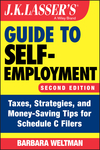Part-Interest Homeowner Entitled to Full Exclusion
Gain on the sale of a principal residence can be excluded up to $250,000 if single, or $500,000 on a joint return as long as the seller has owned and used the home as his or her principal residence for 2 out of 5 years preceding the date of sale. The Tax Court says these full exclusion amounts apply even if the homeowner has only a partial ownership interest in the residence. Take the following case:
A single individual owned a 50% interest in a residence that she lived in for the requisite period. The home was sold and her 50% share of the gain was $264,644.50. She claimed a $250,000 exclusion. The IRS said she was entitled to only half of the $250,000 exclusion, or $125,000. The Tax Court sided with the taxpayer.
The law does not contain any limitation for partial owners of a principal residence. In fact, an example in the regulations provides that unmarried joint owners each owning a 50% interest in a principal residence are each entitled, upon sale, to the full exclusion amount of $250,000 on their portions of the gain. Therefore, this taxpayer could exclude from income up to $250,000 on her portion of the gain realized from the sale of her principal residence.
Source: Sung Huey Mei Hsu, TC Summary Opinion 2010-68
Active participation
Test for determining deductibility of IRA deductions. Active participants in employer retirement plans are subject to IRA deduction phase-out rules if adjusted gross income exceeds certain threshold.



